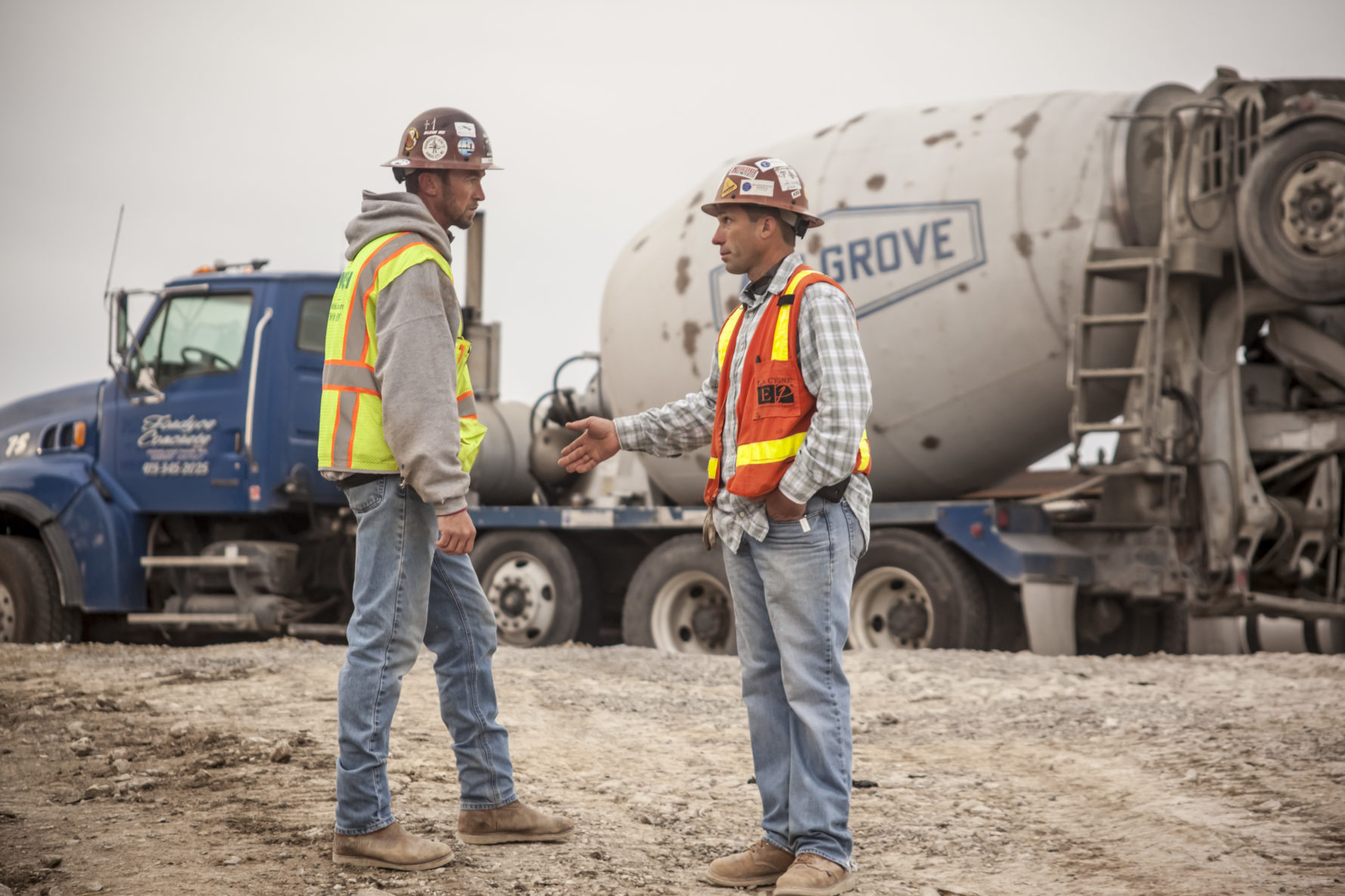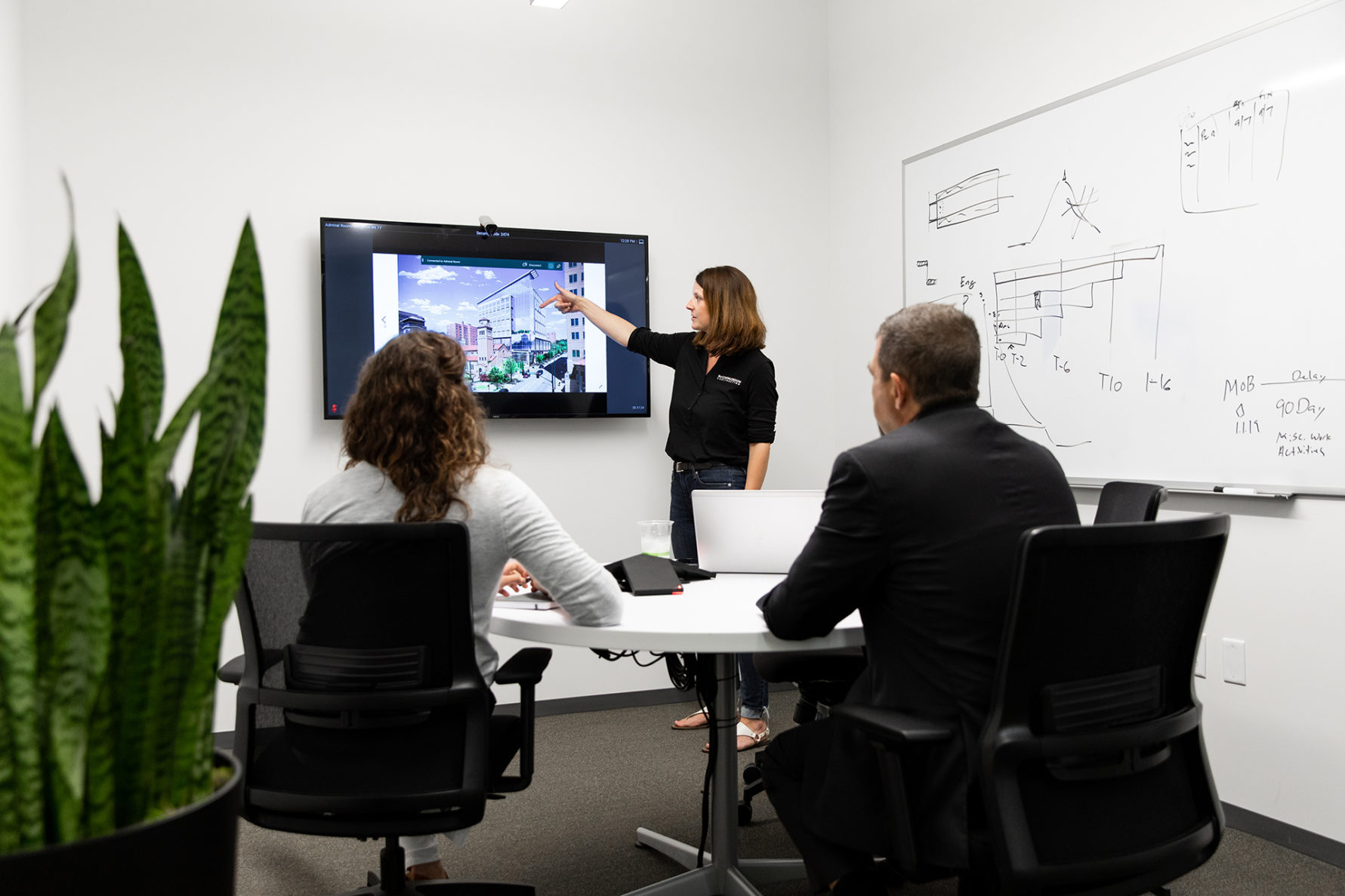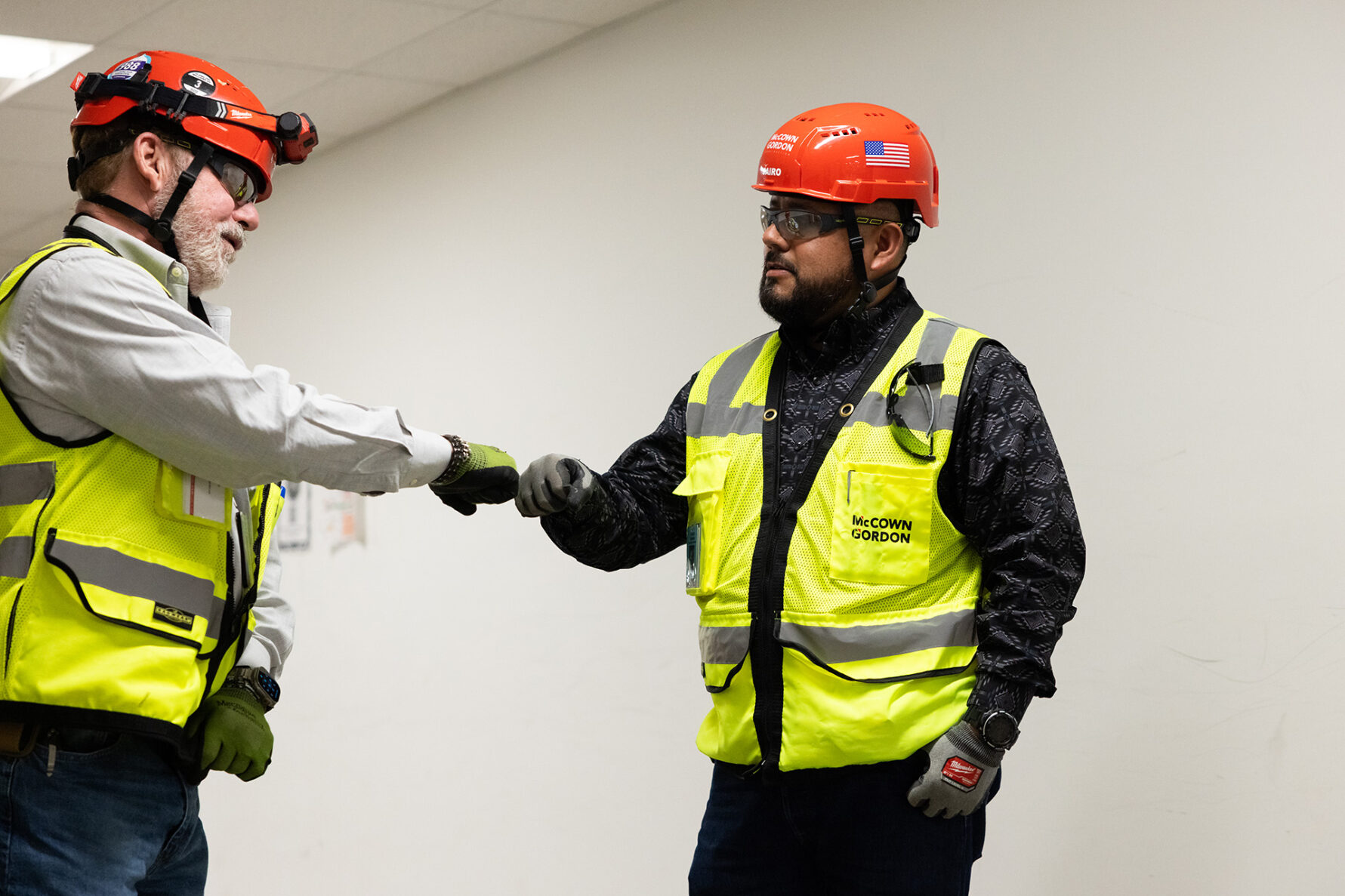Severe weather awareness
There are more than April showers on their way

At McCownGordon, safety is more than wearing hard hats and certifications. We see safety as an all-encompassing factor – from the desk to the jobsite and from the equipment to the weather. As we move into the spring and summer months it is important to be aware of some of the hazards and risks associated with severe weather.
The following is a brief overview of the hazards and safety precautions in the event of severe weather along with links from OSHA, the National Oceanic and Atmospheric Administration (NOAA) and National Weather Service.
Thunderstorms
A thunderstorm affects a relatively small area when compared to a hurricane or a winter storm. The typical thunderstorm is 15 miles in diameter and lasts an average of 30 minutes. Despite their small size, thunderstorms have the potential to be dangerous in multiple ways. Thunderstorms not only include lightning but can also include high winds/straight-line winds, hail, flash flooding, and tornados form from large thunderstorms. The National Weather Service considers a thunderstorm severe if it produces hail at least one inch in diameter, winds of 58 mph or stronger, or a tornado.
Lightning
Lightning kills about 20 people in the United States each year, and hundreds more are severely injured. Lightning strikes can severely injure or kill workers whose jobs involve working outdoors. Lightning is often overlooked as an occupational hazard, but employers need awareness about lightning hazards to ensure their workers’ safety.
Reducing lightning hazards when working outdoors
Employers, supervisors, and workers should understand lightning risks, characteristics, and precautions to minimize workplace hazards. Lightning is unpredictable and can strike outside the heaviest rainfall areas or even up to 10 miles from any rainfall. Many lightning victims are caught outside during a storm because they did not act promptly to get to a safe place, or they go back outside too soon after a storm has passed. If signs of approaching thunderstorms occur, workers should not begin any task they cannot quickly stop. Proper planning and safe practices can easily increase lightning safety when working outdoors. This planning begins with the development of project and site-specific lightning safety protocols for each project which includes proper communication and coordination with our project teams and trade partners to ensure lightning safety protocols for outdoor work are adequate for the current and upcoming scope of work to be performed. Once finalized these safety protocols are communicated to the project team and trade partners and reviewed during daily meetings and added to MGC and trade partner operational risk management (ORM) boards.
Safe practices for lightning include:
- Properly tracking weather conditions and forecasts.
- Communication hierarchies and contact list for each group.
- Issuance of stop work for lightning and nearby thunderstorms.
- Shelter and safe refuge locations.
Tornadoes
Tornadoes can occur with little or no warning. They may appear transparent until dust and debris are picked up or a cloud forms within the funnel. Tornadoes are known for taking erratic paths and changing direction suddenly. Taking precautions in advance of the storms, such as developing an emergency plan, learning the warning signs, and monitoring tornado watches and warnings can help you stay safe if a tornado occurs in your area.
Safety protocols in a tornado
Each McCownGordon jobsite has site-specific emergency action plan procedures (EAP) procedures that include tornado safety procedures, shelter locations and shelter in place protocols in the event that an imminent danger occurs. These site/job-specific procedures are developed by the project team and safety department and are communicated and coordinated with the trade partners. Tornado emergency action plan procedures and shelter areas are reviewed during new hire onboarding to the jobsite and are also reviewed during the daily meeting and are added to MGC and trade partner operational risk management (ORM) boards.
Weather Reports and forecasts
Before beginning any outdoor work, associates, trade partners and supervisors should check weather reports and radio forecasts for all weather hazards. OSHA recommends that associates consider rescheduling jobs to avoid workers being caught outside in hazardous weather conditions. When working outdoors, supervisors and workers should continuously monitor weather conditions. Watch for darkening clouds and increasing wind speeds, which can indicate developing thunderstorms. Pay close attention to local television, radio, and Internet weather reports, forecasts, and emergency notifications regarding thunderstorm activity and severe weather.
Communication and coordination
Ensure groups and trade partners know and understand the emergency action plan procedures and severe weather safety protocols for each project or work locations.
Communication and coordination efforts include:
- Review of site/job-specific emergency action plan (EAP) procedures during new hire orientation and onboarding for all groups.
- The creation of site/job-specific emergency contact list for the trade partners and the McCownGordon project team.
- Review of shelter and emergency action plan safety protocols with all onsite personnel and trade partners during daily and weekly meetings.
- Emergency action plan procedures added to MGC and trade partner operational risk management (ORM) boards.
- Email and text updates for trade partners and MGC project team.
Secure materials and equipment
We ensure jobsite materials and equipment are properly secured in place, moved to safe locations and debris is cleaned up and removed when severe weather is forecasted. This is especially important during overnight hours and weekends. Unsecured equipment/machinery can be damaged and loose materials can become projectiles that can cause property damage and/or injuries.
Secure weather awareness links:
- https://www.weather.gov/safety/lightning
- Lightning Safety When Working Outdoors
- Lightning Safety Brochure
- U.S. Lightning Deaths in 2021
- https://www.osha.gov/tornado
- https://www.weather.gov/safety/tornado
- https://www.weather.gov/safety/tornado-prepare
Learn more about our AWARD-WINNING SAFETY TEAM AND PROTOCOLS




